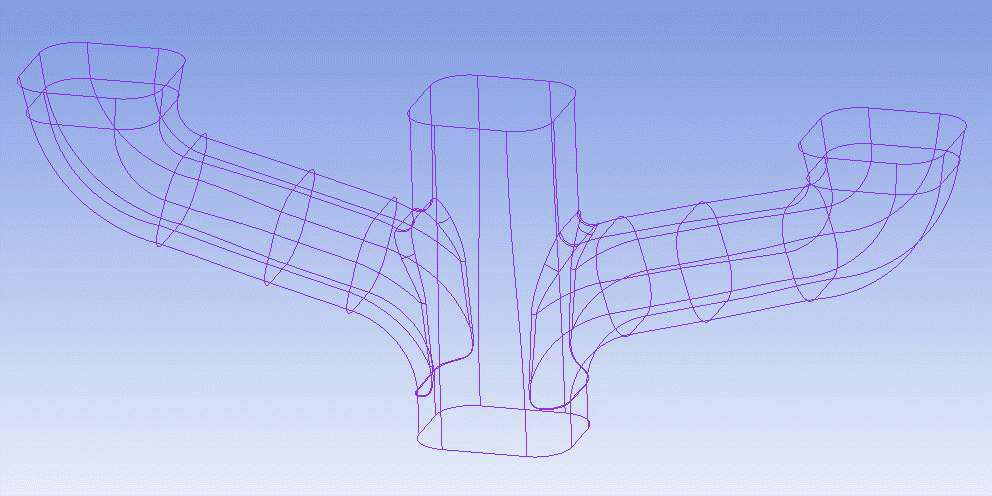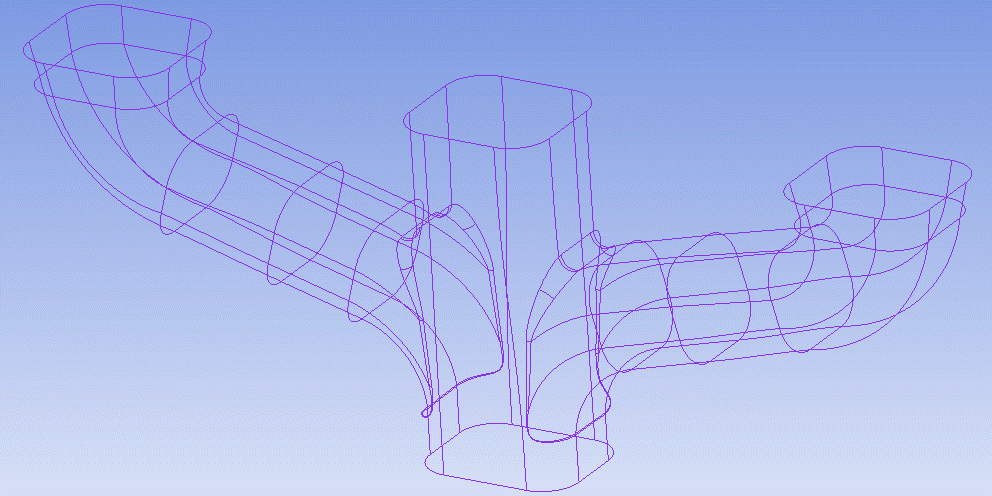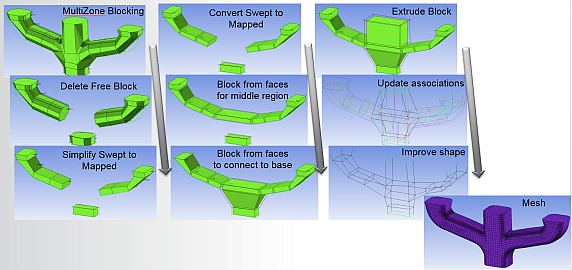With Hexa, the basic steps necessary to generate a hexahedral mesh are the same, regardless of model complexity.
Create an initial blocking (Initialize Blocks) using one of the various approaches to blocking.
Edit the blocking topology using splitting, merging and shaping techniques so that the blocking topology represents the simulation model, composed with hex shapes wherever possible.
Fine tune mesh sizes and tweak topology get a good quality premesh.
When you are satisfied with the pre-mesh quality, convert the pre-mesh to the appropriate type of mesh - unstructured or multiblock.
There are two general strategies for blocking a 3D model. These are commonly referred to as Top Down or Bottom Up.
Top Down
The top down blocking approach starts from one block generated from the 3D bounding box. The blocking topology is shaped to the simulation model using split, delete, merge and move tools.
This approach has the following advantages:
It is often easier to get an all hex mesh using this approach since the global topology is a hex mesh. When splits are made, the blocking remains as all 3D mapped blocks and there is an index control which maintains the connectivity for fast mesh calculations.
The global topology helps avoid getting stuck in a corner, but requires some upfront thought on how the global topology should be constructed to match the CAD topology.
There are no direct associations to the CAD when the blocking is initialized. Such associations are controlled manually. The mesh can be generated at any time and the blocking projected to the surfaces, allowing you to check and add shape as the blocking progresses.
Bottom Up
The bottom up blocking approach, also called 3D MultiZone, starts from the surface structure of the 3D CAD. For each surface it constructs a 2D blocking face, and then it tries to fill those 2D faces with 3D blocks.
This approach has the following advantages:
It should always produce a mesh, but it may not be a hexahedral mesh.
Where it can it generates mapped blocks. If this is not possible it will try to generate swept blocks. If this is not possible, a free block is generated. The free block can be filled with a tet, hex-core, or hex-dominant mesh.
This automated decomposition provides a good starting point to meshing. A user can then do manual decomposition to get more hex mesh. This flexibility is often helpful as a user doesn’t always know how long it will take to get a hex mesh, so it is reassuring to know that a mesh can be generated at any time.
The blocking topology model is automatically associated (shaped) by the CAD. A user can gradually release those constraints as the blocking progresses to get more hex mesh.
While the two general approaches are identified as top down and bottom up, a user may use a combination to successfully block any given geometry.





